Course Objective:
Students will acquire a theoretical, historical, conceptual and critical understanding of television production. They will learn the basic terminology and concepts of television production and will understand the theory of television production as it applies to the interplay of visual and auditory elements within the television studio.
Course Outcome
At the end of the course, learners will be able to:
CO1: Know about the difference between the TV medium and Film medium.
CO2: Acquire the significant knowledge about the various types of video formats and television production methods.
CO3: Understand the grammar of studio production and the key roles of production team.
CO4: Understand the Production & Post production process in detail.
CO5: Acquire an in-depth knowledge about the techniques to handle and manage the problems in each phase of production.
Unit I INTRODUCTION OF TELEVISION PRODUCTION
Introduction of visualization – Understanding TV Medium – Different approaches to visualization – TV, Films, and Ad films – TV Production: ENG, EFA – Types of television standards NTSC, PAL & SECAM – Television Crew: an overview of direction – Art Direction, Floor Management: indoor & outdoor, production management, budget preparation.
Unit II GRAMMAR AND MAKING OF TELEVISION SHOWS
Principles of script writing – Creative writing – Script Formats – Planning of Story, Story Board – Screen Play, dialogue writing, Script writing techniques – Types of script (documentary, short film, advertisement film, corporate film, etc.) – Selection of cast, locations, Set & Design, Research. Locations: In-door, set, on-sights Sets, – Difference between factual and fictional programmes – Introduction to documentary, films, features, PSA, teleplay, telefilm – Programme formats – wildlife films, informative films, nature films, short films, children films/ emotions, climax – Video training materials, manuals – Recent developments in television programmes and techniques – Genres – Packaging and broadcasting styles followed by different channels.
Unit III CAMERA TECHNIQUES AND OPERATION
Types of camera – Video formats (VHS, SVHS, U-MATIC, BETA, DIGITAL) – Framing, Shots & Movements – usage of various types of camera lenses – Usages of Various Filters (day, night, colour correcting filter, diffusion filter), Objectives TV lighting – various types of Lights – Colour temperature, lighting for different situations – Types of lighting: Diffused & Directional – Video recording format – Audio on line or off line- Different types of microphones and their uses – Techniques of live audio recording – Usage of various kinds of Mics: (Dynamic Mic, Condenser Mic, Ribbon Mic and Uni-directional)
Unit IV PRODUCTION STAGES
Brainstorming – Planning – Research: the Basic script – Budget – Logistics – Crew – Location talents – Roles of the Production Crew – For Studio and Outdoor Shows: Set Design: Backdrop and Properties to be used – Role of the Art Director or Set Designer – Props, Wardrobe, make-up – Storyboard – Editing: Linear, nonlinear Equipment – Techniques in editing – Digitizing, format conversion, preparation of edit-list, use of the Dope sheet – Editing schedule – Online and Offline editing – Use of Audio Video Mixer – Special Effects – Writing for the programme – Recording the audio – Musical score recording – Computer graphics – Programme Output.
Unit V PRODUCTION MANAGEMENT
Managing personnel – Financial Management – Programming Strategy and Distribution -Programming Economics – Packaging – From Capsule to Delivery Platform – Strategic Alliances and Partnerships – Regulatory Influences – TRP – Management – Legal issues and Ethics – Curtain raiser – Teaser – Marketing: Getting Gponsors – Publicity – Troubleshooting for Video Equipment.
Total: 60 Hrs
